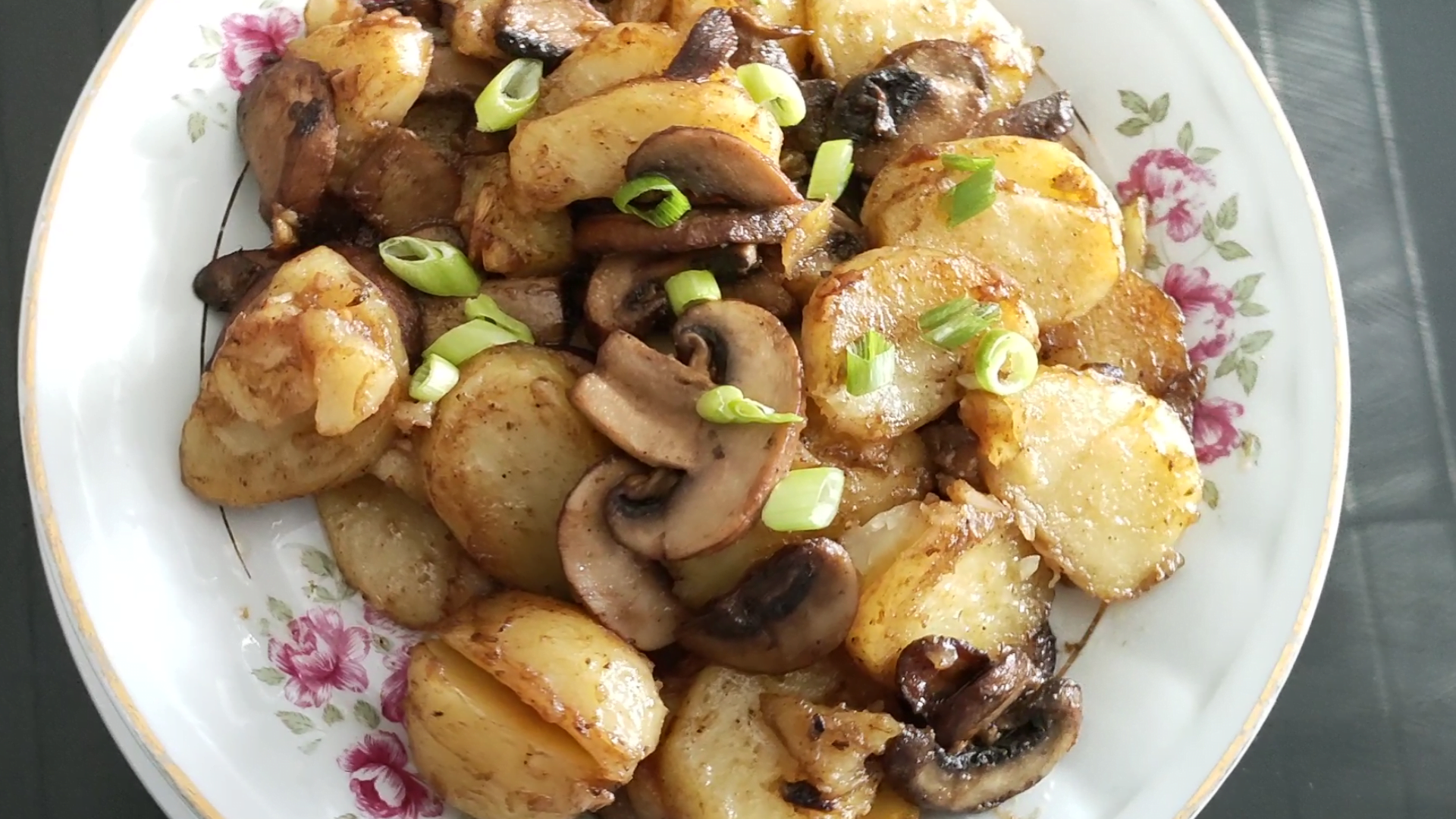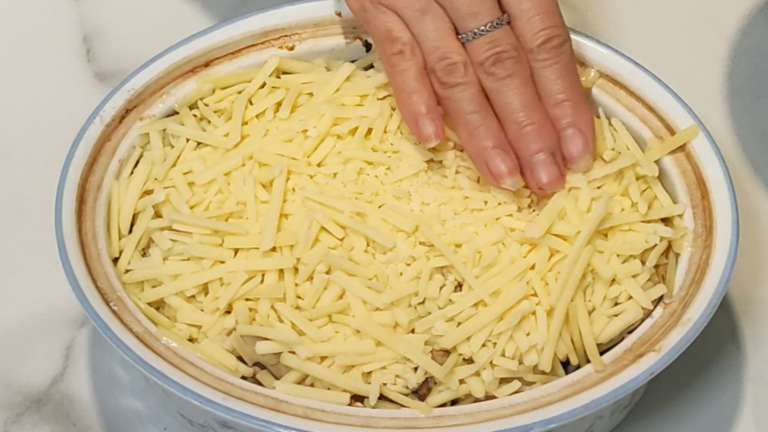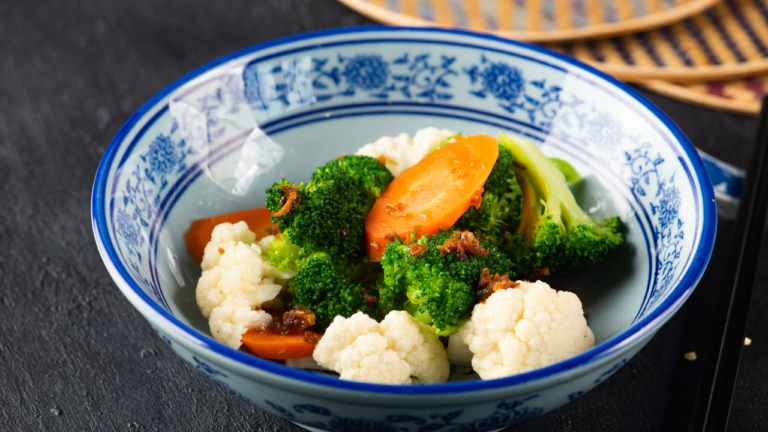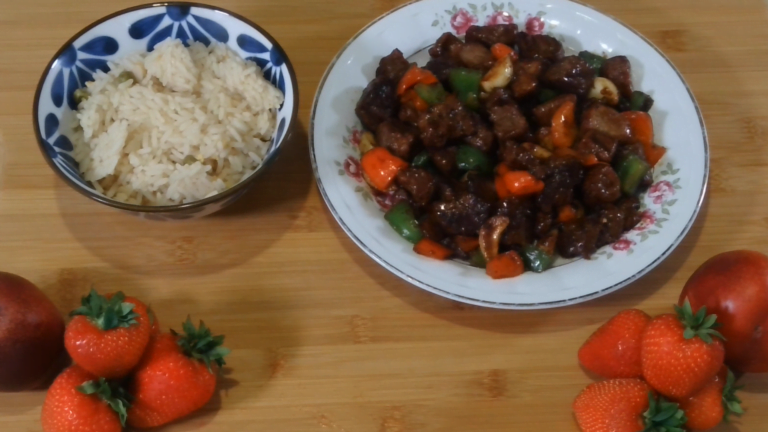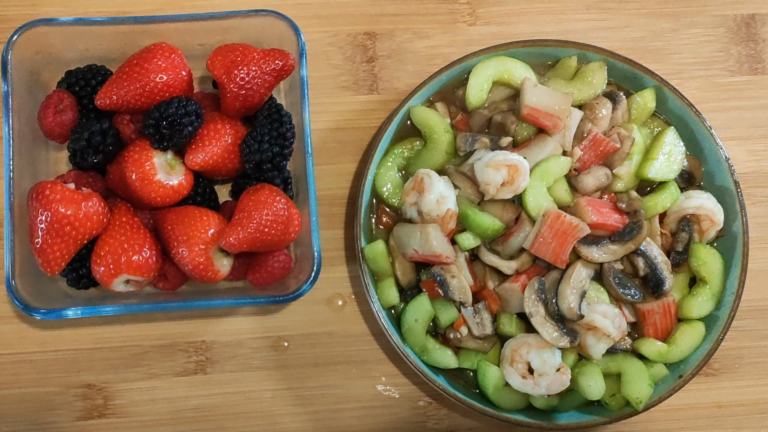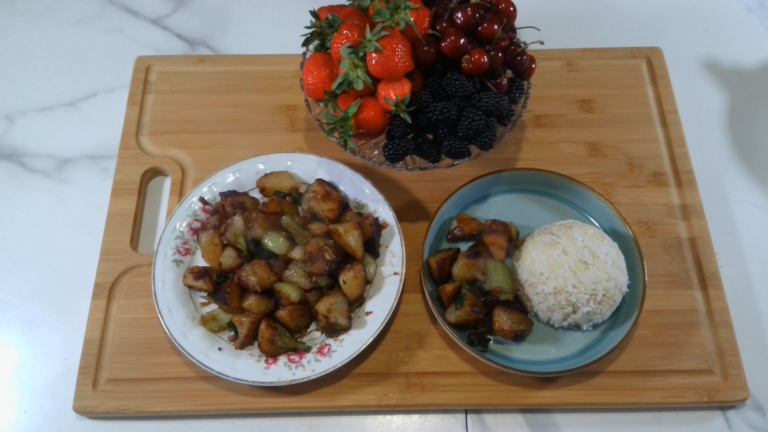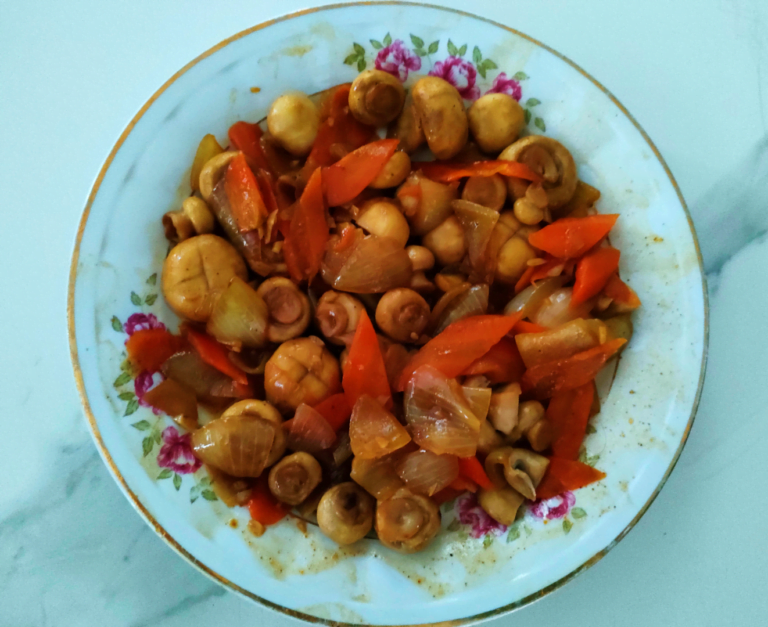How to Cook Leftover Spuds and Mushroom Stir Fry
Why Leftovers Deserve a Second Chance
There’s something deeply satisfying about taking ingredients that might otherwise go to waste and transforming them into a delectable dish.
How to Cook Leftover Spuds and Mushroom Stir Fry
Course: mushroomDifficulty: Easy4
servings5
minutes10
minutes103
kcalIngredients
leftover spuds
Mushrooms
3 cloves of garlic
2 tbsp of oyster sauce
1 and ½ tsp of 13 spices
1 and ½ tsp of Chicken seasoning
Sesame oil
1 spring onion for garnish
Directions
- Heat a shallow pan, add some olive oil, then add your leftover sliced spuds.
- Cook until they start to color, about 3 to 4 minutes.
- Remove the spuds and add a little more oil.
- Add the garlic for 30 seconds,
- Then add the mushrooms cook for another two minutes.
- Now add the 13 spices, stir and reintroduce the spuds.
- Add the oyster sauce.
- Add the chicken seasoning.
- And finally drizzle with sesame oil.
- Garnish with spring onion.
Recipe Video
Notes
- Dont be afraid to experiment. Enjoy!
Leftovers often carry a stigma of being uninspiring, but with the right approach, they can become the foundation of a meal full of flavor and texture. The beauty of using spuds and mushrooms in a stir fry is their ability to soak up bold flavors while retaining their own natural essence.
2. The Appeal of a Simple Stir Fry
A stir fry is a quick, one-pan meal that delivers on convenience and taste. It’s the ideal solution for weeknight dinners when time is of the essence, yet you crave something nourishing and flavorful. Stir fries are also infinitely adaptable, which means your leftover spuds and mushrooms can easily be elevated with just a few pantry staples. The high heat and fast cooking process allow the ingredients to retain their vibrancy while melding together harmoniously.
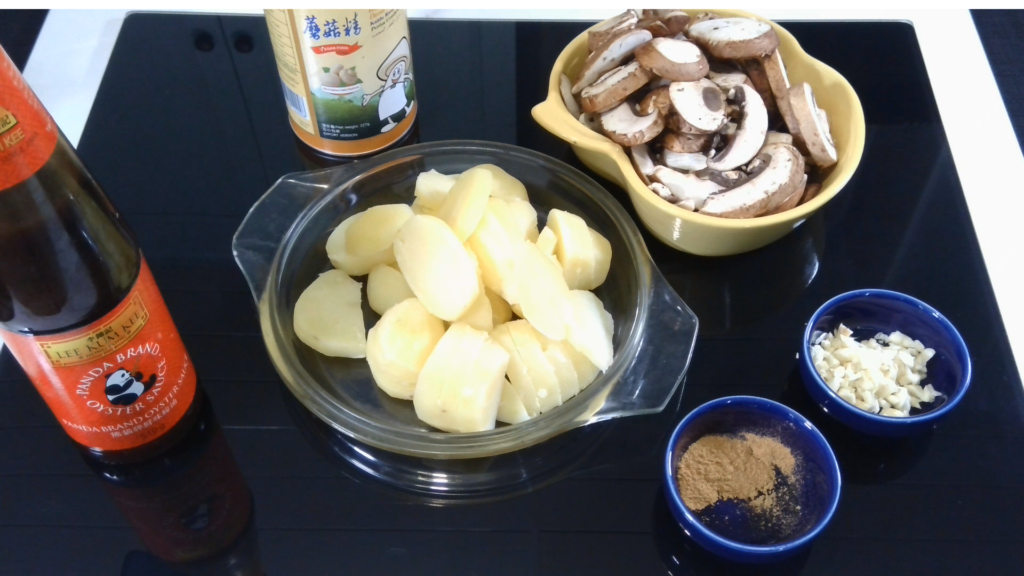
3. Common Kitchen Staples for This Recipe
To create a delicious leftover spuds and mushroom stir fry, you don’t need a long list of exotic ingredients. Most of the essentials are likely already in your pantry or fridge. You’ll need:
- Oil (such as olive oil, sesame oil, or vegetable oil)
- Aromatics (garlic, onions, or shallots)
- Soy sauce or tamari for an umami punch
- Seasonings like salt, pepper, and chili flakes for a bit of heat
- Fresh herbs like parsley or cilantro to brighten up the dish
These everyday items will help transform your leftovers into something special.
4. Highlighting the Stars: Spuds and Mushrooms
Spuds and mushrooms are the core of this stir fry, and they’re both beloved for their versatility. Leftover potatoes bring a heartiness to the dish, while mushrooms add a rich, earthy flavor. Together, they create a satisfying balance of textures, with the mushrooms’ soft bite contrasting with the spuds’ starchy, golden edges.
5. How to Properly Reheat Potatoes Without Losing Texture
Potatoes can be tricky to reheat, as they easily become mushy or dry. To keep them from losing their structure in the stir fry, start by reheating them gently. If they’re boiled or roasted, toss them in a hot pan with a bit of oil, allowing them to crisp up around the edges without falling apart. The goal is to reawaken their natural flavors and give them a slight crunch that will complement the softness of the mushrooms.

6. Enhancing Flavor with Simple Seasonings
One of the keys to making leftovers sing is in the seasoning. Potatoes, while filling, can often be bland on their own. Season them with a touch of salt, freshly cracked pepper, and perhaps a pinch of smoked paprika or cumin for depth. Don’t be afraid to add a splash of vinegar or lemon juice to brighten the flavors and keep the dish lively.
7. Choosing the Best Mushroom Variety for a Stir Fry
Not all mushrooms are created equal when it comes to stir frying. Button mushrooms are reliable and accessible, but if you want to elevate the dish, consider using shiitake or oyster mushrooms. These varieties bring a robust, umami-rich flavor and a more interesting texture. If you have a mix of mushroom types, even better – the variety will add complexity to each bite.
8. Cleaning and Prepping Mushrooms for Optimal Cooking
Mushrooms act like sponges, absorbing water easily. Instead of rinsing them under a tap, use a damp paper towel to gently wipe away any dirt. Once clean, slice them thinly so they cook quickly and evenly in the stir fry. Mushrooms need space in the pan to sear properly, so be sure not to overcrowd them.
9. Choosing the Right Oil and Aromatics
The type of oil you use sets the tone for the dish. Sesame oil lends a nutty, aromatic quality, while olive oil brings a subtle fruitiness. For a more neutral flavor, opt for vegetable oil. Start the stir fry by sautéing aromatics such as garlic, onions, or shallots in the hot oil. This step builds the base of the dish, infusing the oil with flavor and laying the foundation for the stir fry’s complexity.
10. Building Layers of Flavor with Spices and Sauces
The secret to a stir fry lies in the layers of flavor that unfold with each step. After the aromatics, add spices and sauces. Soy sauce or tamari provides a deep, savory note. You can also toss in a splash of rice vinegar or lime juice for acidity. A dash of chili flakes or fresh ginger will add warmth and zing, keeping the dish vibrant and exciting.

11. The Importance of High Heat and Timing
Stir frying requires a certain level of intensity. Cooking on high heat ensures the ingredients retain their integrity while absorbing the sauce. Timing is key; add the spuds first to allow them to crisp up, then the mushrooms to soak in the flavors without becoming too soft. Keep the ingredients moving in the pan to prevent sticking and ensure an even cook.
12. Achieving a Crisp Texture Without Overcooking
The goal is to strike a balance between tenderness and crispness. The spuds should have a golden exterior, while the mushrooms should be slightly browned, yet juicy. Avoid overloading the pan with too many ingredients at once, as this can cause steaming rather than frying, resulting in soggy vegetables.
13. Stirring and Tossing: A Delicate Dance
Mastering the art of stirring and tossing is essential. Use a wide spatula or wooden spoon to flip the ingredients gently, ensuring everything is coated evenly in the sauce. You want each piece to touch the heat at some point, creating a symphony of textures and flavors.
14. Adjusting Seasoning and Balance of Flavors
Before serving, taste the stir fry to adjust the seasoning. You may need a bit more soy sauce, a touch of sweetness from a drizzle of honey, or a hint of citrus to lift the dish. The beauty of a stir fry lies in its flexibility – tweak it until it suits your palate perfectly.
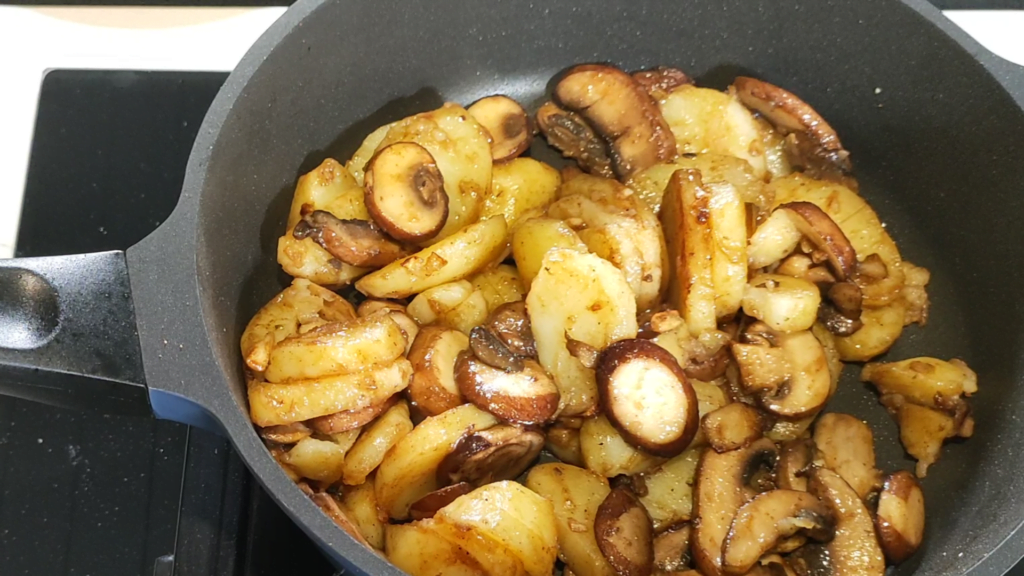
15. Topping Suggestions to Elevate the Dish
To add some extra flair, garnish your stir fry with toasted sesame seeds, freshly chopped herbs, or a sprinkle of crushed peanuts for added crunch. These toppings provide contrast in both texture and flavor, taking the dish from simple to sensational.
16. Pairing the Stir Fry with Simple Sides
While the spud and mushroom stir fry can easily stand on its own, consider serving it alongside a bowl of steamed rice or quinoa for a more complete meal. A side of pickled vegetables or a fresh cucumber salad would also provide a refreshing contrast to the warm, savory flavors of the stir fry.

